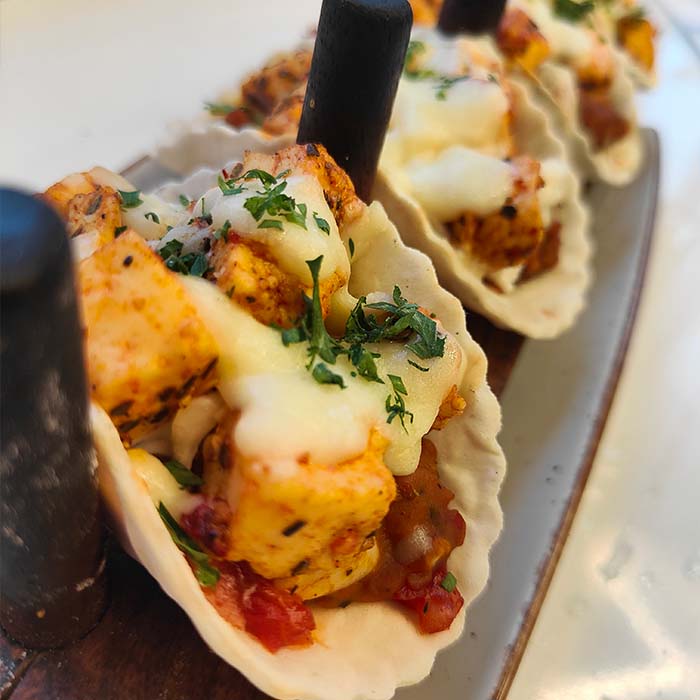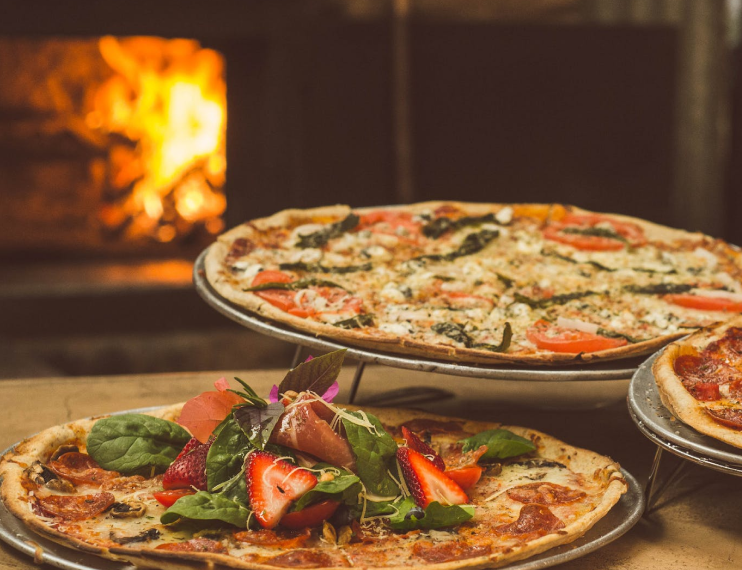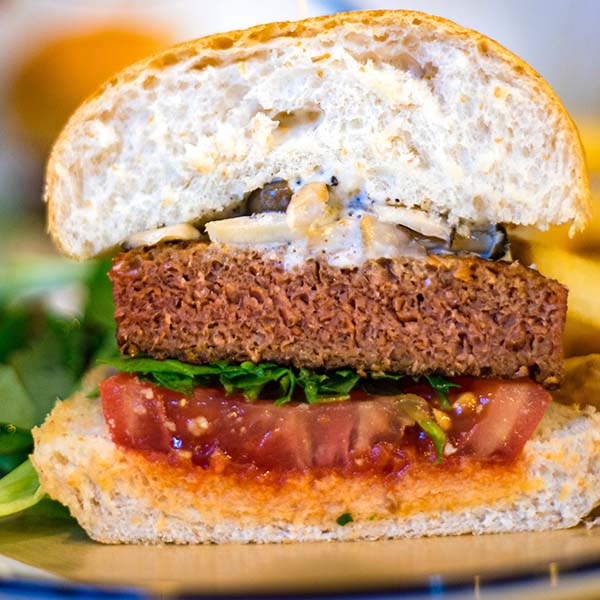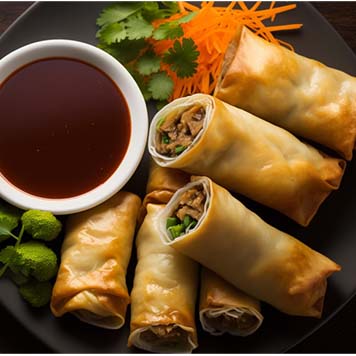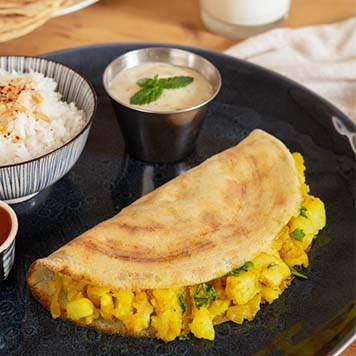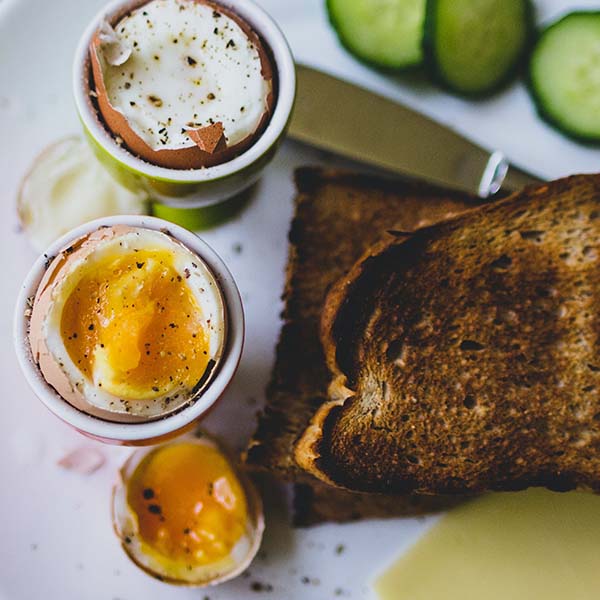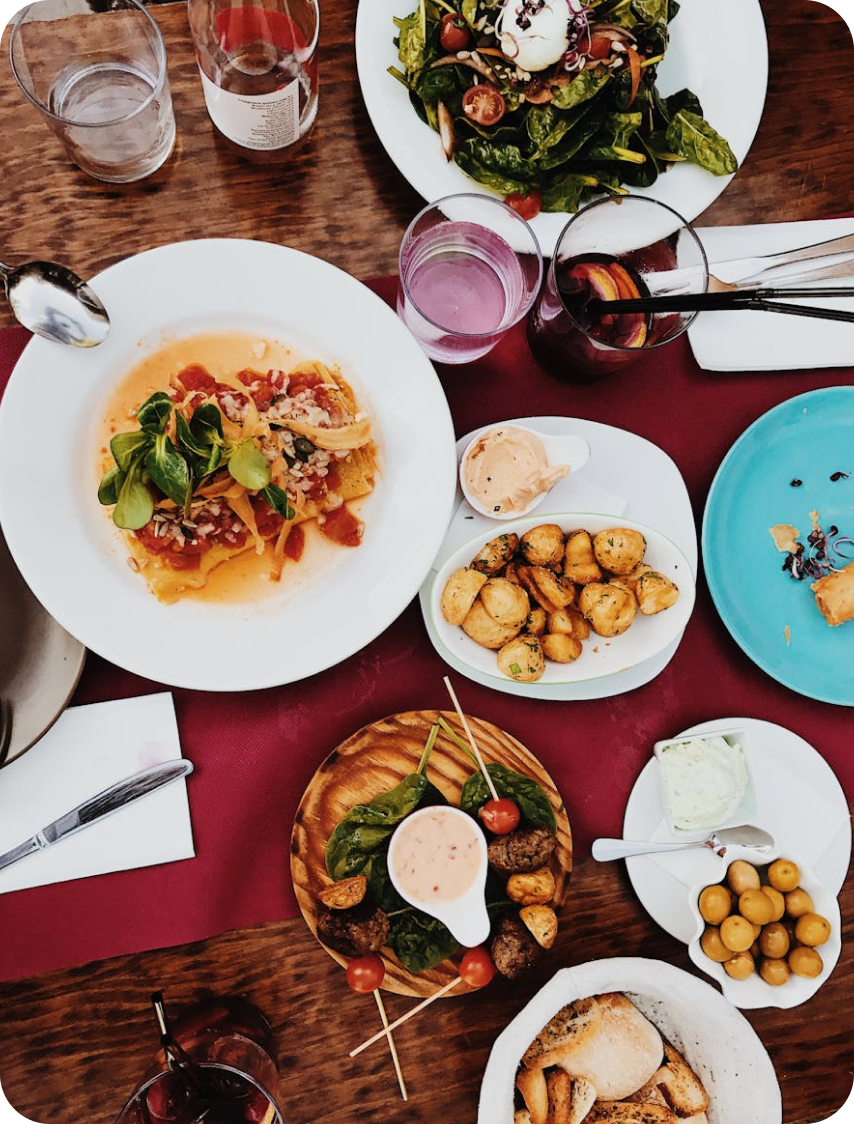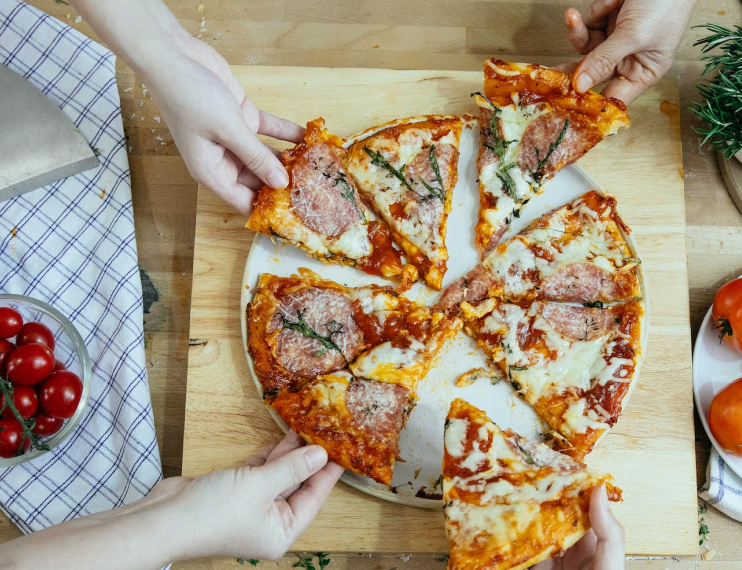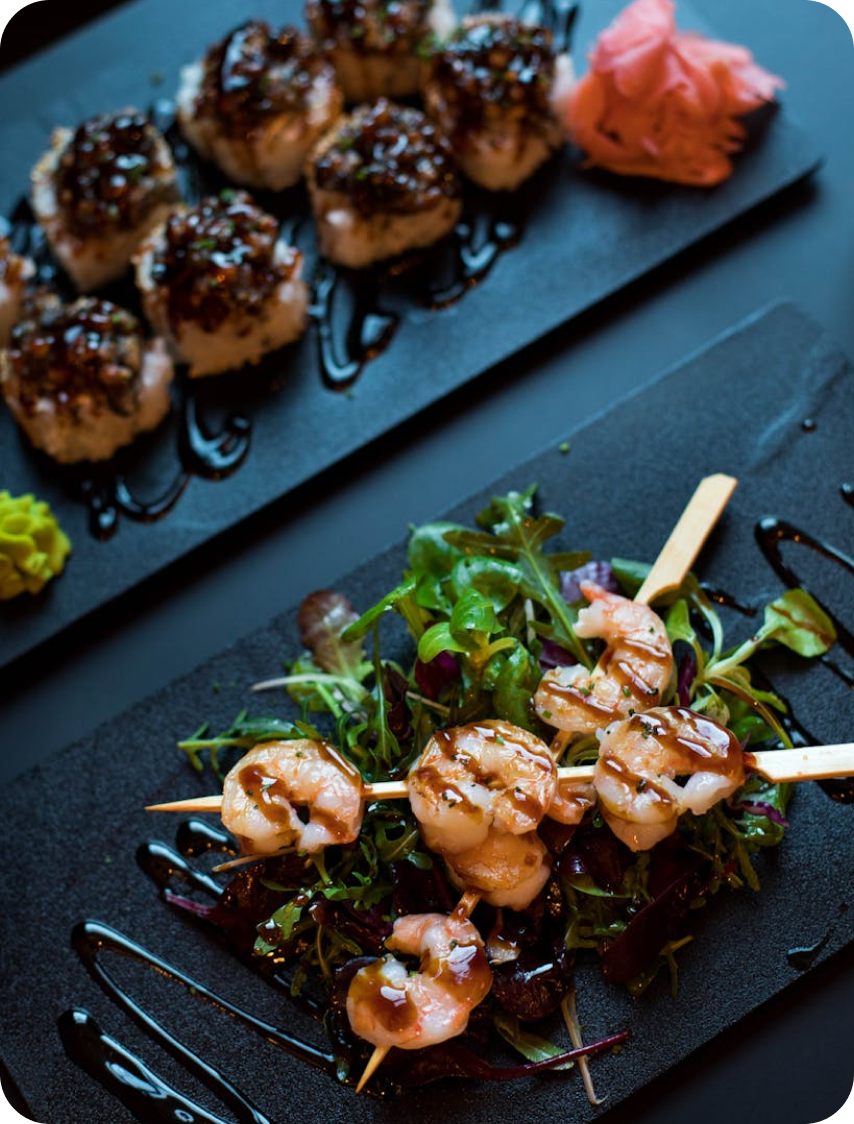Indian Food Cuisine in Bangalore
Introduction
Indian cuisine is deep-rooted in culture and tradition. There’s a deeply layered history to the country’s cuisine due to all the different colonies and immigrants. India is a sub-continent that has a diverse terrain which has resulted in different cuisines sprouting from different corners. In a land where the dialect shifts every 100 kms, it's no surprise that different cuisines took root based on the available ingredients. While a lot of cultures have taken inspiration from one another, they all have their own unique cooking techniques. With its rich tapestry of flavours and techniques, Indian cuisine has something for every palate.
The heat of spices, the creamy gravies and the crazy amount of preparations make every meal a treat. Indian cuisine has gained a lot of popularity overseas. The versions available differ from the authentic one to fit the palette of people. However, it is undoubtedly the cuisine people turn to when they want a savoury rich treat. Every dish has a deep-rooted cultural identity.
History
The history of Indian cuisine is as old as its civilisation. Indian food has been shaped by the country’s topography, trade routes and inter-cultural interactions. From the spices you find in Kerala to the grains you reap in Punjab, every single piece of land contributes an ingredient that’s unique and grown intentionally to suit the fertility of the land. The culinary map of India has to be studied to understand just how diverse the cuisine is.
Ancient Indian texts like the - Vedas highlight the importance of food in rituals and daily life. Indian cuisine has been influenced by Ayurveda, where food is treated as medicine. The Mughals introduced rich gravies and biryanis to the country. Invasions and trade brought a lot of new elements to Indian cooking, giving it the much deserved spotlight. Over time, invasions and trade brought new elements into Indian cooking. The coloniers brought in ingredients like potatoes, chillies, and tomatoes, which have now become staples in Indian kitchens.
Modern Indian cuisine is a harmonious blend of these influences. The traditions have survived the test of time while wholeheartedly accepting the beauty of fusion food. Indian food has embraced new ingredients while staying loyal to the spices.
Popular Dishes Section
Butter Chicken
A true foodie has definitely tried butter chicken and never gone back on it. It’s a sweet chicken gravy dish that shouldn’t work for everyone but always does. This is a north indian dish that often sends out it’s aroma to let people know it’s time to celebrate. It’s a creamy dish with a tomato based curry, the tender chicken is marinated in yogurt and spices. It pairs well with the Indian bread naan and easily elevates any dish it comes in contact with.
Masala Dosa
A gem from the south of India, the masala dosa is a crepe you don’t want to miss out on. It uses a fermented rice batter and is filled in with a spicy mashed potato mixture. It makes for a hearty breakfast and is had by many to keep them going for hours without feeling the famous ‘food coma.’ It’s served with chutneys - tomato and coconut. This dish brings out interesting textures on a plate. It’s a light dish that is a very popular breakfast option for many.
Biryani
Who doesn’t know of the biryani? Undebatably one of the greatest dishes to exist out there, the biryani is a true culinary masterpiece. It elevates simple ingredients like rice and chicken to something extraordinary. Every region of India has taken liberties to give the biryani their personal twist and they are yet to fail at enhancing this masterpiece. The biryani is cooked with rice and chicken together, it makes use of a blend of spices that is slow cooked with the rice & chicken. Aromatic spices like saffron, cardamom, and cloves make this dish unforgettable.
Gulab Jamun
Once you’ve committed yourself to a large spread of Indian meal, you’re probably in for a spicy adventure. While Indian cuisine does balance out the heat of the spices a simple dessert doesn’t hurt noone. The gulab jamun is a decadent sweet dish that combines milk solids with a sweet syrup to give you something truly unique. It’s soft and just the right color. The flavour is simple yet distinct. It’s a popular choice for celebrations.
Indian cuisine is not restricted to just the butter chicken or the tandoori roti. You’ll find a wide array of dishes that come under the humble bracket of ‘Indian cuisine.’ There are snack/street food options like pani puri, samosas, chaats, and more. Every dish is cooked with a lot of thought and the flavour is never compromised on.
Vegan & Gluten-Free Options
In response to the growing number of health-conscious customers, many pizzerias now provide organic toppings, gluten-free crusts, and vegan cheese. These options ensure that everyone, regardless of dietary restrictions, can enjoy pizza, scare & guilt-free.
From authentic classics to innovative fusions, Bangalore’s pizza scene caters to every preference and craving.
Restaurant Solution Guide
In the mood for great Indian food but can’t decide? Well luckily, the only place you’re not overcharged for Indian food is, India. There are obviously an overwhelming number of options here but that’s exactly where HOGR, the food discovery app, comes in.
HOGR helps you find the best Indian restaurants around you. You’ll find authentic reviews, food videos and recommendations from foodies who’ve been there and tried it. Be it a traditional thali or a fusion dish, you’ll find it on HOGR. There are also curated lists that narrow down your hunt significantly. The curated lists made by foodies ensure that you land on the perfect spot.
The visual menu and honest feedback helps one land on a decision quicker. Especially if it’s from a friend or a trusted food influencer. HOGR takes the guesswork out of dining. Let the app lead you to the most authentic and flavorful Indian food experiences in your city.
Dietary Considerations
Indian cuisine’s diversity makes it super adaptable to various dietary needs. Vegetarianism makes up for a majority of the population and this is why you’ll find vegetarian options in every menu. There’s a lot of vegan options as well.
For people who are gluten intolerant, you’ll find rice options that leave you feeling satiated. There are also breads like bajra roti, jowar roti, khicdi and dosas. For any type of allergy you may want to check in with your chef. Dairy is used widely in Indian cuisine so that may be something to look into.
Spices hold the essence of Indian cuisine and can be intense for those who aren’t accustomed to the heat. Do let your waiter know about your spice tolerance as they are used to such requests. The meals are also often cooked in shared tandoors so you may want to communicate your needs accordingly.
Indian cuisine is one that celebrates tradition and artistry. The use of spices to gives it that unique flavour. The vibrant colors you’ll find at a dinner plate are unlike any other. The food not only satisfies your hunger but also leaves you craving for more. Be it a local street food stall or a fine dining restaurant, there’s magic of the Indian cuisine hidden everywhere.
FAQ'S
What types of cuisine can I expect to find in Indian restaurants?
Indian cuisine is incredibly diverse, with each region of the country having its own unique dishes and cooking styles. You can expect to find everything from spicy curries and biryanis to savory dosas and thalis.
What is the average cost of a meal at a restaurant in India?
The cost of a meal at a restaurant in India can vary widely depending on the type of establishment and the location. A budget restaurant may offer a meal for as little as 100-200 rupees, while a high-end restaurant can charge upwards of 2000-3000 rupees per person.
Are vegetarian options available in Indian restaurants?
Yes, vegetarian options are widely available in Indian restaurants. In fact, many Indian cuisines are vegetarian-friendly, with dishes made from lentils, vegetables, and dairy products.
Can I find alcohol in Indian restaurants?
Alcohol is available in some restaurants in India, but it is not widely consumed due to cultural and religious factors. Some restaurants may also have restrictions on serving alcohol depending on their location and license.
Is it customary to leave a tip in Indian restaurants?
Tipping is not mandatory in India, but it is appreciated for good service. It is generally expected to leave a tip of 10-15% of the total bill amount.
What are the dining hours in Indian restaurants?
Dining hours can vary widely depending on the type of restaurant and the location. Generally, restaurants are open from 11 am to 11 pm, but some may close earlier or stay open later depending on the demand.
Is it necessary to make a reservation at Indian restaurants?
It is recommended to make a reservation at high-end or popular restaurants in India to avoid waiting in line. However, many budget restaurants do not accept reservations and operate on a first-come, first-served basis.
Can I pay for my meal using credit or debit cards?
Most restaurants in India accept credit and debit cards, but it is always a good idea to carry some cash as well, especially in smaller towns and rural areas where electronic payment options may not be available.
 Discover
Discover
 Cuisines
Cuisines
 Popular Dishes
Popular Dishes
 Special Diets
Special Diets







